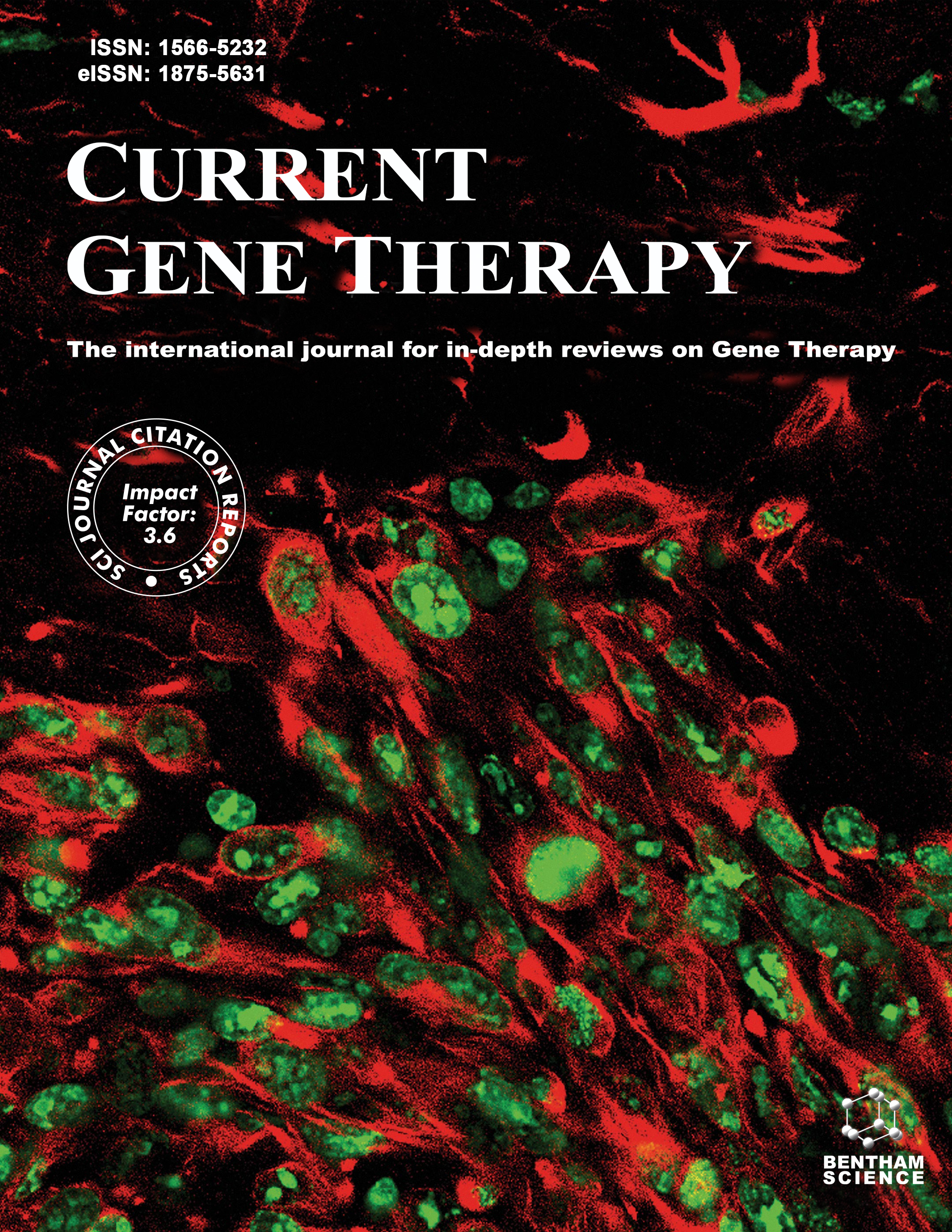- Home
- A-Z Publications
- Current Gene Therapy
- Previous Issues
- Volume 2, Issue 1, 2002
Current Gene Therapy - Volume 2, Issue 1, 2002
Volume 2, Issue 1, 2002
-
-
Genetic Chemoprotection with Mutant O6-Alkylguanine-DNA-Alkyltransferases
More LessAuthors: D.A. Hobin and L.J. FairbairnOne of the main barriers to more efficacious use of modern chemotherapeutic agents, is the collateral toxicity exhibited in normal, highly proliferative tissues, primarily the haemopoietic, gastrointestinal and Pulmonary tissues. Drug resistance of tumours to these drugs compounds this problem. This review discusses the role of O6-alkylguanine-DNA alkyltransferase (ATase) in conferring protection against O6-alkylating a Read More
-
-
-
Genetic Engineering in Allotransplantation of Vascularized Organs
More LessAuthors: P. Mathieu, C. Chauveau, D. Bouchet, C. Guillot, L. Tesson and I. AnegonTransplantation offers a unique opportunity for gene transfer into allografts before grafting. After organ retrieval, the cold ischemic period renders organs available for manipulation and gene transfer. Local expression of protective or immunomodulatory molecules within the graft environment offers a better local bioavailability of bioreagents and potentially less systemic side effects. Protection against ischemia-reperfusion injur Read More
-
-
-
Lentiviral Vectors for Gene Therapy of HIV-1 Infection
More LessBy M.R. MautinoLentiviral vectors based on HIV-1, HIV-2, or SIV have the ability to transduce dividing and non-dividing T cells, dendritic cells, hematopoietic stem cells and macrophages, which are the main target cells for gene therapy of HIV-1 infection. Besides their function as gene delivery vehicles, lentiviral vector backbones containing the cis-acting sequences necessary to perform a complete replication cycle in the presence of vir Read More
-
-
-
Gene Transfer into Hematopoietic Stem Cells Using Lentiviral Vectors
More LessGene transfer into hematopoietic cells is currently being used to modulate immune responses, to protect hematopoietic cells against cytotoxic drugs or viral genes, and to restore gene deficiencies due to either inborn genetic defects or acquired loss of regular gene function. In particular, gene addition strategies for inherited severe combined immunodeficiencies (SCID) due to adenosine deaminase (ADA) deficiency or def Read More
-
-
-
Cancer Immunotherapy Using Gene-Modified Dendritic Cells
More LessAuthors: A. Ribas, L.H. Butterfield, J.A. Glaspy and J.S. EconomouGene-engineered dendritic cells (DC) are being tested in cancer immunotherapy. DC are the best equipped antigen-presenting cells (APC) to overcome tolerance / ignorance to self antigens presented by cancer cells. Genetic immunotherapy with DC engineered to express tumor antigens has the potential advantages of endogenous epitope presentation by both major histocompatibility complex (MHC) class I and II molecul Read More
-
-
-
Cytokine Gene Transfer into Dendritic Cells for Cancer Treatment
More LessAuthors: I. Tirapu, M. Rodriguez-Calvillo, C. Qian, M. Duarte, C. Smerdou, B. Palencia, G. Mazzolini, J. Prieto and I. MeleroBone marrow-derived dendritic cells have been used to treat established experimental tumors by unleashing a cellular immune response against tumor antigens. Such antigens are artificially loaded onto dendritic cells' antigenpresenting molecules by different techniques including incubation with synthetic antigenic determinants, tumor lysates or nucleic acids encoding for those relevant antigens. Ex vivo gene transfer with vir Read More
-
-
-
Improvement of Adoptive Cellular Immunotherapy of Human Cancer Using Ex-Vivo Gene Transfer
More LessAuthors: S. Paul, B. Calmels and R. AcresA variety of adoptive cellular strategies, aimed at boosting the immune system, have been tested in the management of metastatic diseases. Despite the drawbacks associated with ex vivo cell manipulation and upscaling, several such approaches have been assessed in the clinic. The use of lymphokine-activated killer (LAK) cells, autolymphocyte therapy (ALT) and tumor-infiltrating lymphocytes (TIL) have been the best stu Read More
-
-
-
Applications of Muscle Electroporation Gene Therapy
More LessAuthors: S. Li and M. BenningerMuscle is a convenient and accessible site for non-viral gene delivery, which can manufacture gene products and provide a long-duration of gene expression. The level of gene expression after administration of naked DNA plasmid or polymer-formulated DNA plasmid containing a reporter gene to muscle via syringe injection, however, is very low. As a result, no significant therapeutic effect can be detected after saline- or polyme Read More
-
Volumes & issues
-
Volume 25 (2025)
-
Volume 24 (2024)
-
Volume 23 (2023)
-
Volume 22 (2022)
-
Volume 21 (2021)
-
Volume 20 (2020)
-
Volume 19 (2019)
-
Volume 18 (2018)
-
Volume 17 (2017)
-
Volume 16 (2016)
-
Volume 15 (2015)
-
Volume 14 (2014)
-
Volume 13 (2013)
-
Volume 12 (2012)
-
Volume 11 (2011)
-
Volume 10 (2010)
-
Volume 9 (2009)
-
Volume 8 (2008)
-
Volume 7 (2007)
-
Volume 6 (2006)
-
Volume 5 (2005)
-
Volume 4 (2004)
-
Volume 3 (2003)
-
Volume 2 (2002)
-
Volume 1 (2001)
Most Read This Month
Article
content/journals/cgt
Journal
10
5
false
en

Most Cited Most Cited RSS feed
-
-
New Hope for Intervertebral Disc Degeneration: Bone Marrow Mesenchymal Stem Cells and Exosomes Derived from Bone Marrow Mesenchymal Stem Cell Transplantation
Authors: Xiao-bo Zhang, Xiang-yi Chen, Jin Qi, Hai-yu Zhou, Xiao-bing Zhao, Yi-cun Hu, Rui-hao Zhang, De-chen Yu, Xi-dan Gao, Ke-ping Wang and Lin Ma
-
- More Less

